




Your support is critical to our success.
Accepted Scientific Name: Haworthia cooperi Baker
Refug. Bot. (Saunders) 4: t. 233 (1870) Baker et al.
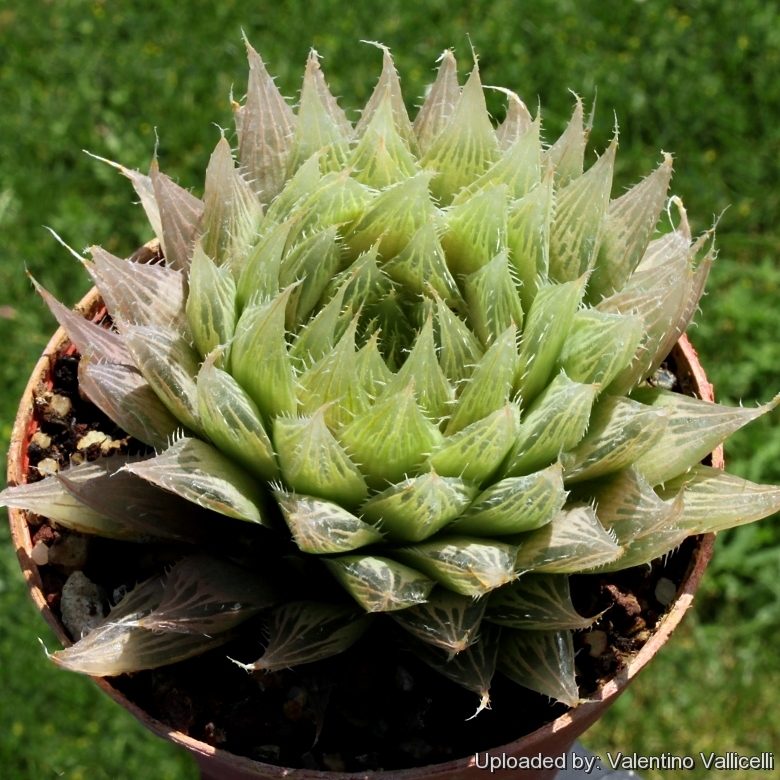
It is a free clumping stemless rosette succulent with translucent fenestrate leaves.
Origin and Habitat: South Africa (Eastern Cape Province).
Altitude: 800 - 1000 metres above sea level.
Synonyms:
- Haworthia cooperi Baker
- Catevala cooperi (Baker) Kuntze
Haworthia cooperi Baker
Refug. Bot. (Saunders) 4: t. 233 (1870)
Synonymy: 5
- Haworthia cooperi Baker
- Catevala cooperi (Baker) Kuntze
- Haworthia cooperi f. variegata hort.
- Haworthia vittata Baker
- Catevala vittata (Baker) Kuntze
Haworthia cooperi var. dielsiana (Poelln.) M.B.Bayer
Haworthia Revisited 51 (1999)
Synonymy: 5
- Haworthia cooperi var. dielsiana (Poelln.) M.B.Bayer
- Haworthia dielsiana Poelln.
- Haworthia obtusa var. dielsiana (Poelln.) Uitewaal
- Haworthia pilifera var. dielsiana (Poelln.) Poelln.
- Haworthia joeyae C.L.Scott
Haworthia cooperi var. doldii M.B.Bayer
Haworthiad 16: 65 (2002)
Synonymy: 2
- Haworthia cooperi var. doldii M.B.Bayer
- Haworthia doldii (M.B.Bayer) M.Hayashi
Haworthia cooperi var. gordoniana (Poelln.) M.B.Bayer
Haworthia Revisited 52 (1999)
Synonymy: 4
- Haworthia cooperi var. gordoniana (Poelln.) M.B.Bayer
- Haworthia gordoniana Poelln.
- Haworthia obtusa var. gordoniana (Poelln.) Uitewaal
- Haworthia pilifera var. gordoniana (Poelln.) Poelln.
Haworthia cooperi var. leightonii (G.G.Sm.) M.B.Bayer
Haworthia Handb. 128 (1976)
Synonymy: 2
- Haworthia cooperi var. leightonii (G.G.Sm.) M.B.Bayer
- Haworthia leightonii G.G.Sm.
Haworthia cooperi var. pilifera (Baker) M.B.Bayer
Haworthia Revisited 54 (1999)
Synonymy: 7
- Haworthia cooperi var. pilifera (Baker) M.B.Bayer
- Catevala pilifera (Baker) Kuntze
- Haworthia cooperi f. pilifera (Baker) Pilbeam
- Haworthia obtusa var. pilifera (Baker) Uitewaal
- Haworthia pilifera Baker
- Haworthia pilifera f. acuminata Poelln.
- Haworthia obtusa f. acuminata (Poelln.) Uitewaal
Haworthia cooperi var. truncata (H.Jacobsen) M.B.Bayer
Haworthia Revisited 55 (1999)
Synonymy: 3
- Haworthia cooperi var. truncata (H.Jacobsen) M.B.Bayer
- Haworthia cooperi var. obtusa hort.
- Haworthia obtusa f. truncata H.Jacobsen
Haworthia cooperi var. venusta (C.L.Scott) M.B.Bayer
Haworthia Revisited 56 (1999)
Synonymy: 2
- Haworthia cooperi var. venusta (C.L.Scott) M.B.Bayer
- Haworthia venusta C.L.Scott
ENGLISH: Cooper's Haworthia, Pussy-foot, Window haworthia
Description: Haworthia cooperiSN|27463]]SN|14982]] is a low growing densely clustered succulent which rosettes are usually withdrawn in the soil. Its short stem is located several centimetres underground, and produces many cylindrical leaves that are just long enough to reach the soil surface, the transparent tips allowing light into the factory below. In transverse section the leaf is so transparent you can read through it. It is excellent for transmitting light to parts of the leaf that are underground. It was introduced into cultivation by Cooper in 1860.
Remarks: H. cooperi is a variable species that is difficult to distinguish from other Haworthia species, particularly Haworthia cymbiformisSN|975]]SN|975]] and Haworthia decipiensSN|14982]]SN|27463]].
Rosettes: 35-90(-120) mm across each with 20 to 40 leaves .
Leaves: Up to 20-25(-50) cm long, c. 6mm thick, turgid, multifarious, oblong-lanceolate, half buried in the ground except for the translucent tips, often round and ending abruptly or acuminate with a large pellucid terminal awn to 6 mm long, flat on the face, convex on the back and keeled upwards or with both surfaces convex, pale green, grey-green or bluish-green with dark longitudinal lines becoming reddish with too much sun or not enough water. Margins and keel with pellucid deltoid-cuspidate teeth 2-4 mm long or smooth. The tips of the leaves have transparent epidermis with marks radiating from the awned leaf-tip, and the mesophyll is also transparent because it has no intercellular spaces. Consequently, light enters through the window-like tip and then passes deep into the rest of the under-ground leaf, where cells with chloroplasts are located: photosynthesis actually occurs underground. Because most of each leaf is subterranean, they stay cooler in summer, they are less visible to animals, and the air in the soil is richer in carbon dioxide than is air above ground.
Inflorescence: Peduncle simple, about a 30 cm long; raceme simple, 15 cm long consisting of 20 to 30 closely set flowers; pedicels very short; bracts deltoid, 3-6 mm long narrowly elongate, whitish.
Flowers: Narrowly elongate, whitish. The flower's Structure, colour and fruits are typical of the genus. Perianth c.2 cm long; segments half as long as the tube.
Blooming season:Spring to summer (in habitat November to January)
Subspecies, varieties, forms and cultivars of plants belonging to the Haworthia cooperi group
 Haworthia cooperi Baker: has densely clustered rosettes usually withdrawn in the soil, the transparent tips allowing light into the factory below. It is a variable. Distribution: Eastern Cape.
Haworthia cooperi Baker: has densely clustered rosettes usually withdrawn in the soil, the transparent tips allowing light into the factory below. It is a variable. Distribution: Eastern Cape.- Haworthia cooperi var. dielsiana (Poelln.) M.B.Bayer
- Haworthia cooperi var. doldii M.B.Bayer
- Haworthia cooperi var. gordoniana (Poelln.) M.B.Bayer
- Haworthia cooperi var. leightonii (G.G.Sm.) M.B.Bayer: has reddish longitudinal lines towards the end of the leaf. This variety often appears in nurserymen's lists as leightoniae.
- Haworthia cooperi var. pilifera (Baker) M.B.Bayer
 Haworthia cooperi var. truncata (H.Jacobsen) M.B.Bayer: has soft leaves, somewhat spherical with blue-green translucent-patterns. Distribution: Eastern Cape Province, north of East London
Haworthia cooperi var. truncata (H.Jacobsen) M.B.Bayer: has soft leaves, somewhat spherical with blue-green translucent-patterns. Distribution: Eastern Cape Province, north of East London Haworthia cooperi f. variegata hort.: variegated form.
Haworthia cooperi f. variegata hort.: variegated form. Haworthia cooperi var. venusta (C.L.Scott) M.B.Bayer: has fat, windowed leaves covered in silvery-white fuzz with soft teeth and tips. Distribution: Endemic of a small area (20 x 20 m) near the Kasouga River.
Haworthia cooperi var. venusta (C.L.Scott) M.B.Bayer: has fat, windowed leaves covered in silvery-white fuzz with soft teeth and tips. Distribution: Endemic of a small area (20 x 20 m) near the Kasouga River.
Notes: Haworthia has been plagued with an overprolification of names, recognising variation over similarity, and causing much confusion. The genus needs to be revised using population-level molecular techniques in order for species concepts to be resolved.
Bibliography: Major references and further lectures
1) Gordon D. Rowley “The illustrated encyclopedia of succulents” Crown Publishers, 01/Aug/1978
2) Doreen Court “Succulent Flora of Southern Africa” CRC Press, 01/Jun/2000
3) Urs Eggli “Illustrated Handbook of Succulent Plants: Monocotyledons” Springer, 2001
4) Charles L. Scott “The genus Haworthia (Liliaceae): a taxonomic revision” Aloe Books, 1985
5) Stuart Max Walters “The European Garden Flora: Pteridophyta, Gymbospermae, Angiospermae-Monocotyledons” Cambridge University Press, 1984
6) M. B. Bayer “The new Haworthia handbook” National Botanic Gardens of South Africa, 1982
7) John Pilbeam “Haworthia and Astroloba: A Collector's Guide” B. T. Batsford Limited, 1983
8) Bruce Bayer “Haworthia revisited: a revision of the genus” Umdaus Press, 1999
9) Ernst Van Jaarsveld, Ben-Erik Van Wyk, Gideon Smith “Succulents of South Africa: A Guide to the Regional Diversity” Tafelberg Publishers, Limited, 01/Jul/2000
10) ames D. Mauseth “Botany: An Introduction to Plant Biology” Jones & Bartlett Publishers, 2014
11) Charles L. Scott “The Genus Haworthia (Liliaceae): A Taxonomic Revision” Aloe Books, 1985
12) Noel Urton “Plants of the Swartkops valley bushveld” Zwartkops Trust, 1993
13) W. Wilson Saunders: “Refugium Botanicum; or, Figures and Descriptions from Living Specimens of Little Known of New Plants of Botanical Interest” volume 4, London 1871
14) Cactus and Succulent Journal (US) 53: 70-71 1981
15) J. G. Baker “Flora Capensis” page 253 1897
16) Bayer, M.B and van Jaarsveld, E. 2001. “Haworthia. in Illustrated Handbook of Succulent Plants: Monocotyledons.” Springer, Berlin.
17) Bayer, M.B. 1999. “Haworthia Revisited: A revision of the genus.” Umdaus Press, Hatfield.
18) Bayer, M.B. and Manning, J.C. “The Haworthia nomenclator: A list of accepted species with some guidelines for infraspecific names.” Haworthia Update 7(4):30-40.2012
19) Manning, J.C., Boatwright, J.S., Daru, B.H., Maurin, O. and Van der Bank, M. “A molecular phylogeny and generic classification of Asphodelaceae subfamily Alooideae: A final resolution of the prickly issue of polyphyly in the Alooids?” Systematic Botany 39(1):55-74. 2014
20) von Staden, L., Klopper, R. & Manning, J.C. 2014. Haworthia cooperi Baker. “National Assessment: Red List of South African Plants” version 2014.1. Accessed on 2014/06/10
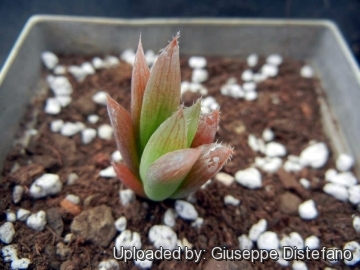
Catevala cooperi (Haworthia cooperi) Photo by: Giuseppe Distefano
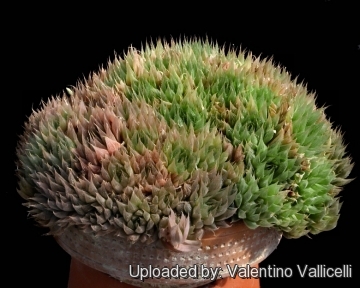
Catevala cooperi (Haworthia cooperi) Photo by: Valentino Vallicelli
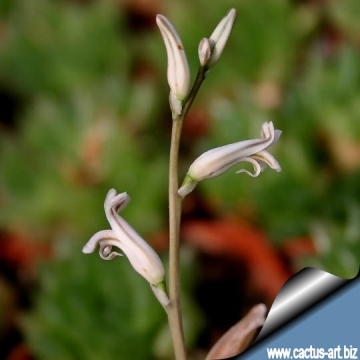
Catevala cooperi (Haworthia cooperi) Photo by: Cactus Art

Catevala cooperi (Haworthia cooperi) Photo by: Valentino Vallicelli
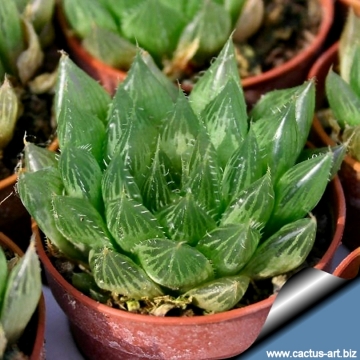
Catevala cooperi (Haworthia cooperi) Photo by: Cactus Art

Catevala cooperi (Haworthia cooperi) Photo by: Valentino Vallicelli
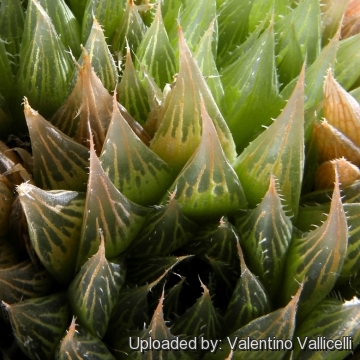
Catevala cooperi (Haworthia cooperi) Photo by: Valentino Vallicelli
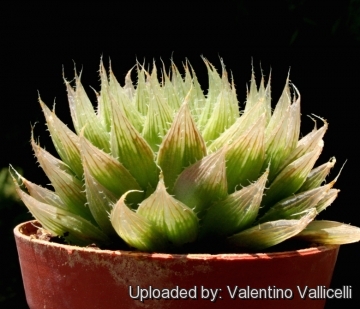
Catevala cooperi (Haworthia cooperi) Photo by: Valentino Vallicelli
Cultivation and Propagation: Needs regular water (They enjoy a little water during winter period too) but do not overwater as they will most likely wind up with root rot, and do not water again until dry!
Frost Tolerance: Light frost protection required. Minimum of 5ºC for safe growing (but hardy up to -5°C.)
Sun Exposure: Requires light shade to bright light (protect from direct sun)
Propagation: Offsets (New plants are freely produced between the basal leaves)
| Your Actions | |
|---|---|
| Back to Catevala index | |
| Back to Aloaceae index | |
 |
Back to Succulents Encyclopedia index |
Privacy stantement - Terms and conditions - How to cite - About us - Feedback - Donate



